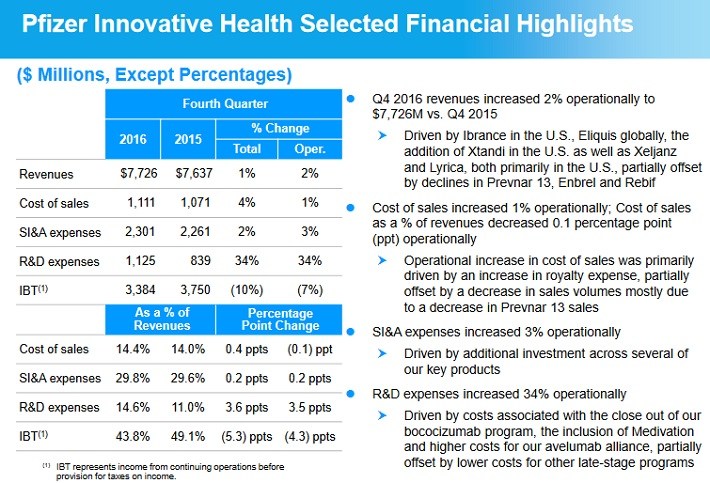Investors can count on the health care sector for dividends.
Pfizer (PFE) and Teva Pharmaceuticals (TEVA) have dividend yields of 3.8% and 4.2%, respectively.
Their dividend track records are spotty: Pfizer cut its dividend by 50% in 2009, and Teva hasn’t raised its dividend since 2015.
That said, Pfizer, it has raised its dividend each year since the cut.
With a few more years, it will become a Dividend Achiever, a group of 265 stocks with 10+ years of consecutive dividend increases.
And, their high yields are attractive. The S&P 500 Index on average has just a 2% dividend yield.
This article will compare-and-contrast Pfizer, a company trying to fight off generic competition, with Teva, the largest generics manufacturer in the world.
Business Overview
Both Pfizer and Teva operate primarily in pharmaceutical drugs.
Some health care companies, such as Johnson & Johnson (JNJ ), have large medical devices and/or consumer health franchises, for diversification.
Pfizer and Teva are almost entirely focused on pharmaceuticals. Pfizer has a consumer health care products segment, but it comprises just 7% of its annual revenue.
Pfizer operates two reporting segments:

Source: 2016 Earnings Presentation, page 14
The Innovative Health segment is Pfizer’s most important business. It includes the company’s core pharmaceutical drugs Ibrance, Eliquis, and Xtandi.
Organic revenue increased 2% last year in this segment.
Teva is a manufacturer of generic pharmaceuticals. It has a diversified business model, with a majority of annual revenue derived from generics.

Source: 4Q 2016 Earnings Presentation, page 27
Pfizer’s revenue rose 8% last year. Operational revenue, excluding one-time impacts and foreign exchange fluctuations, increased 11% in 2016.
Adjusted earnings-per-share increased 9% for the year, to $2.40.









Leave A Comment